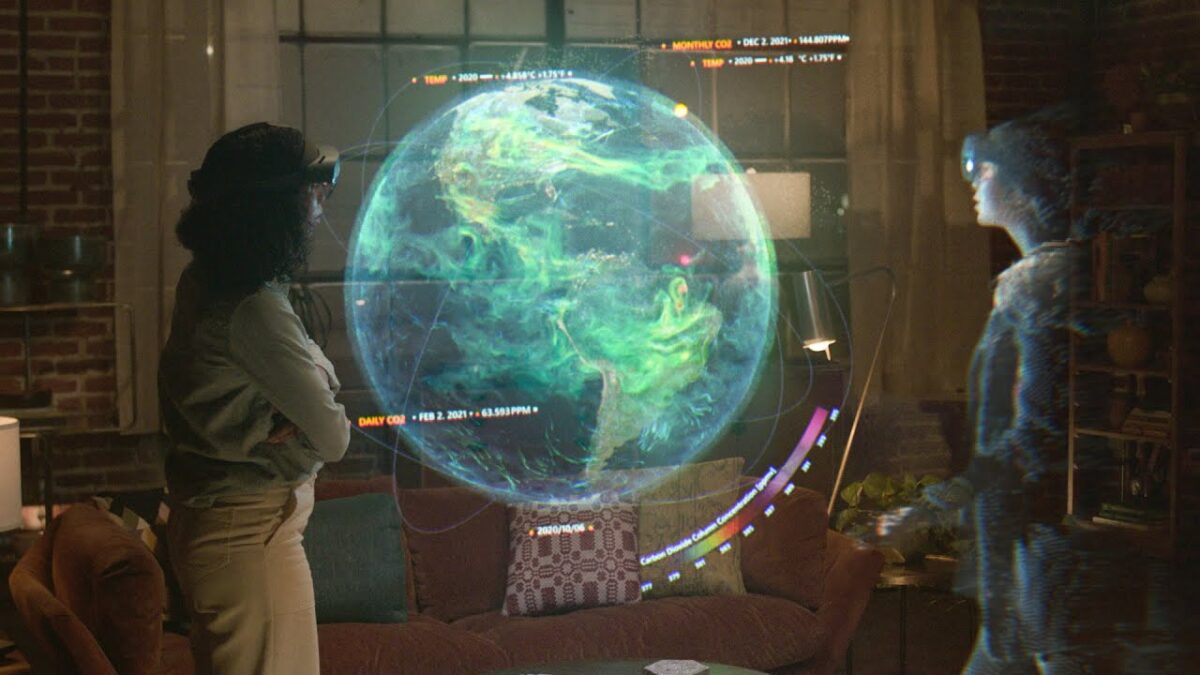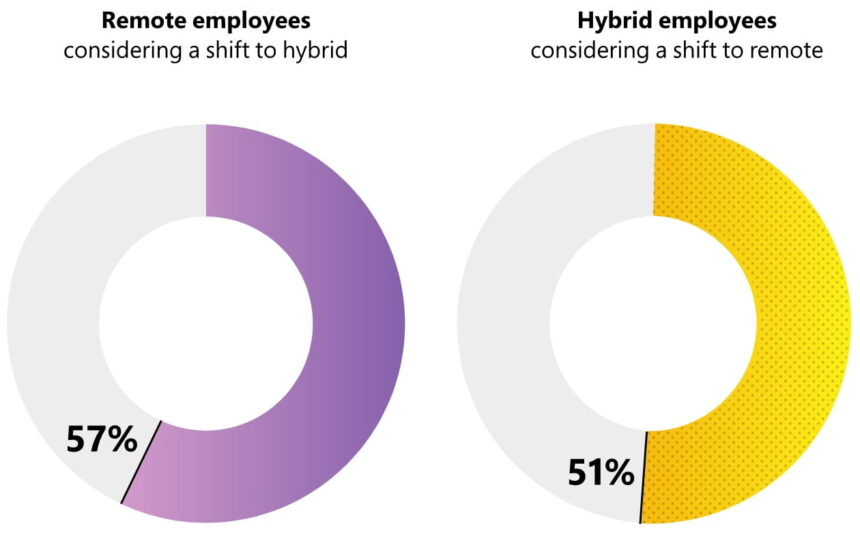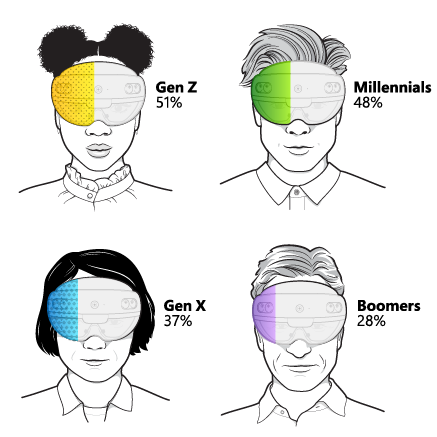Microsoft Work Trend Index 2022: The Metaverse is for the next generation

In its Work Trend Index 2022, Microsoft looks at developments in the labor market and how we will work together in the future. Work in the metaverse is still a fringe phenomenon in this context, attracting interest from younger people in particular.
In the Work Trend Index 2022, Microsoft focuses on hybrid work after the Corona pandemic. The tech company continues to anticipate major changes in the labor market and how people define the role and value of work in their lives. The "great reshuffle" is far from over, the company writes.
Market research firm Edelman Data x Intelligence collected the data for the Work Trend Index between Jan. 7, 2022, and Feb. 16, 2022, among 31,102 full-time employees or self-employed workers in 31 markets. In each market, it surveyed at least 1,000 full-time employees. The results reflect the global average.
Hybrid work models in focus
According to Microsoft, there is "no going back" to the pre-Corona world of work, especially for younger employees from "Gen Z" (born circa 1995 - 2012) and "Millennials" (born circa 1980 to 1994). Flexibility in the job and in the choice of workplace would have top priority. According to Microsoft, the hybrid work model has the greatest potential for the future.

Many hybrid employees are considering a move to remote, according to Microsoft's surveys, while even more remote employees are considering a move to hybrid in the coming year. So you meet in the middle. | Image: Microsoft
As a powerful telepresence technology, VR and AR could take on a larger role in the remote context in the future. Chiefly betting on this is Meta CEO Mark Zuckerberg, who believes it's easier to transport bytes rather than atoms - that is, to render digital images of people into virtual spaces rather than physically transporting them by train, car, plane or hyperloop in a resource-intensive way.
Gen Z is most likely to be metaverse-friendly
The possible future of telepresence work in the metaverse is addressed only in passing by Microsoft in the Work Trend Index 2022. The argument is similar to what Zuckerberg has been preaching for years: Through avatars, people would have the opportunity to feel closeness in virtual space and interact with each other more naturally, comparable to reality, explains Microsoft researcher Mar Gonzalez Franco.
Microsoft's own research shows that people are more active and present in an avatar meeting compared to an audio call, that they respond better to body language and that conversations feel more natural.
There is a willingness to use metaverse technologies for work, especially among younger audiences, with about 50 percent of respondents. About 30 percent of respondents are unaware of the Metaverse or rule out participation.

Many Millennials and individuals from Gen Z can envision doing some of their work in the Metaverse in the next two years. A good portion of respondents didn't know what to do with the term or rejected the idea. | Image: Microsoft - Illustrations by Brown Bird Design
- 52% of employees are willing to use immersive spaces in the metaverse for meetings or team activities in the next year.
- 47% of employees are willing to present themselves as avatars in meetings in the next year.
- 51% of Gen Z and 48% of Millennials can imagine doing some of their work in the Metaverse in the next two years.
- 16% of employees say they will never work in the Metaverse.
- 13% of workers say they don't know what the term "metaverse" means.
Microsoft announced a VR and AR update for Teams in November 2021 and is cooperating with Meta: Teams conferences can be streamed in Meta's VR office Workrooms. With Mesh, Microsoft also offers a technical infrastructure that links VR, AR, and 3D and 2D content.
Microsoft founder and former CEO Bill Gates predicted in late 2021 that by the end of 2023 or 2024, "most virtual meetings" will take place in the Metaverse, which he defines as a 3D space with avatars.
More about Microsoft:
- Microsoft Flight Simulator: Toolkit for eye tracking relieves your GPU
- Military Hololens: Microsoft expects further criticism
- Microsoft: Hololens 3 canceled? XR head speaks out
Note: Links to online stores in articles can be so-called affiliate links. If you buy through this link, MIXED receives a commission from the provider. For you the price does not change.